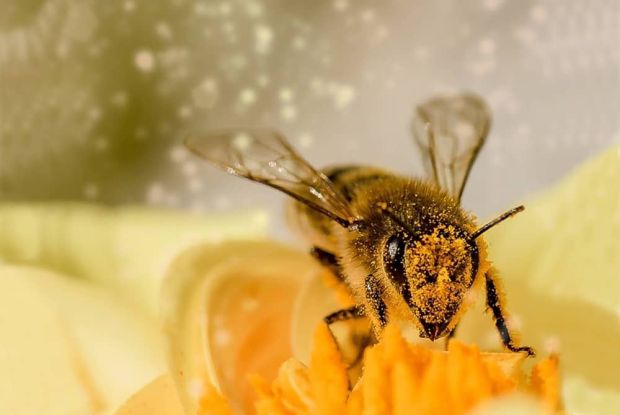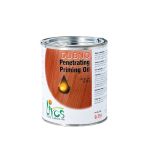We use cookies to make your experience better. To comply with the new e-Privacy directive, we need to ask for your consent to set the cookies. Learn more.
Bee Meadow Seed Mix (Perennial)
A very rich mix of seeds that will provide plenty of browsing for bees. Contains 24 different varieties. Does not contain any Brassica species. 100% organic seed. Promotional packets available. More details below.

Perennial Bee Meadow with 100% Organic Seed (No Brassicas)
A fantastic mix of flower seeds to attract bees all season long. The meadow will provide both pollen and nectar to maintain hive health. All the flowers chosen produce high quality pollen.There are no brassicas in the mix. Although brassicas produce a lot of pollen the full grown plants are very vigorous and will out compete the other flowers. Brassica rich honey also crystallizes very quickly making extraction a problem. The Bee Meadow perennial mix contains 24 different varieties - enough for even the most fussy of bees!
10% Buckwheat, 10% Crimson Clover, 5% Phacelia, 4% Red Clover, 3% Sainfoin, 1% White Clover, Fenugreek 8%, 8% Coriander, 4% Lucerne, 7% Fennel, 5% Caraway, 5% Sun Flower, 8% Calendula, 1% Cornflower, 2% Dill,2% Corncockle, 10% Birds Foot, 4% Fennel Flower
Promotional Packets Available:
We can provide promotional packets to order. Each 10cm x 10cm packet contains enough bee meadow seed to cover a few square meters and can be customised with your logo and messaging. Please contact us with your quantities to get a quote and lead time.
Coverage:
- 10kg per 4,000m2 (1 acre)
- 1kg per 400m2
- 250g per 100m2
How to sow the bee meadow -
- Performs best in a sunny location.
- Bare soil should be cultivated (harrowed/rotivated) to ensure that the young seeds can root easily. Where weeds or grass dominate the ground should be ploughed in autumn and soil cultivation should take place in spring before sowing the flowermeadow. Do not apply any fertiliser. It is important to remove potentially competing weeds (e.g. dock weed, nettles, etc.) before sowing.
- Sow in spring in a well raked bed with fine crumble soil.
- Scatter seed, rake lightly and firm down well.
- Water for first couple of weeks.
- Flowers May-October.
- The meadow should be cut about 5cm high in September. The grass cuttings should dry on the meadow to allow remaining seeds to fall on to the ground. After some days carefully remove the dried foliage. During the flowering period the meadow should not be used as flowers will not recover when compacted by walking.
- About 85 percent of Earth's flowering plants rely on pollination by bees and other pollinators. Bees also pollinate more than 30 percent of all plants that produce foods and beverages consumed by humans around the world
Pollen and Nectar
Honey bees consume processed nectar (honey) and pollen (bee bread), both of which are provided by flowers. Nectar, which bees convert to hone y, serves as the primary source of carbohydrates for the bees. It provides energy for flight, colony maintenance, and general daily activities. Without a source or surplus of carbohydrates, bees will perish within a few days. This is why it is important to make sure that colonies have sufficient honey stores during the winter months.
y, serves as the primary source of carbohydrates for the bees. It provides energy for flight, colony maintenance, and general daily activities. Without a source or surplus of carbohydrates, bees will perish within a few days. This is why it is important to make sure that colonies have sufficient honey stores during the winter months.
Pollen, a powdery dust-like substance, is produced by various flowering plants. Pollen is one of the purest and richest natural foods, containing all of the nutritional requirements of a honey bee. Pollen is the honey bees main source of protein and it also provides fats/lipids, minerals, and vitamins. Pollen from different floral sources has different quantities of each component.
Nectar is a sweet fluid found in flowers. The worker bees in the colony mix the nectar with enzymes and deposit it into a cell where it remains exposed to air for a time, allowing some of the water to evaporate. The bees help the process along by fanning the open cells with their wings. The resulting product is what we call honey. The cell containing the honey is later capped with beeswax and kept for future use.
The majority of honey bee larvae eat honey, but larvae that are chosen to become future queens will be fed with royal jelly. Royal jelly is a white secretion produced by young, female worker bees. It is comprised of pollen and chemicals from the glands of worker bees. Since chosen honey bee queens eat only royal jelly, they grow quickly and become twice the size of an ordinary honey bee. Due to the rich nutritional value of royal jelly, queens can survive five years and lay up to 2,000 eggs each day.


